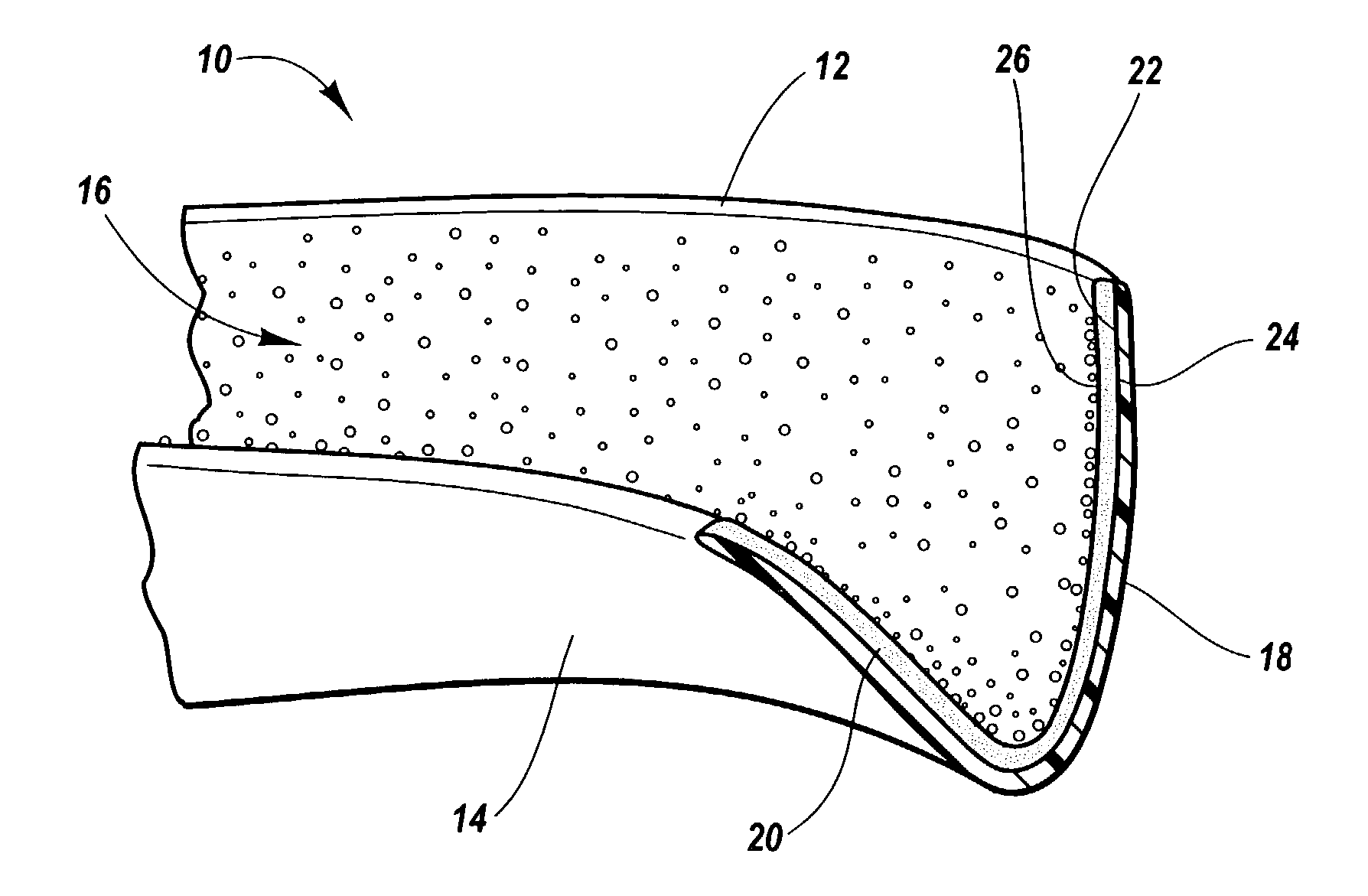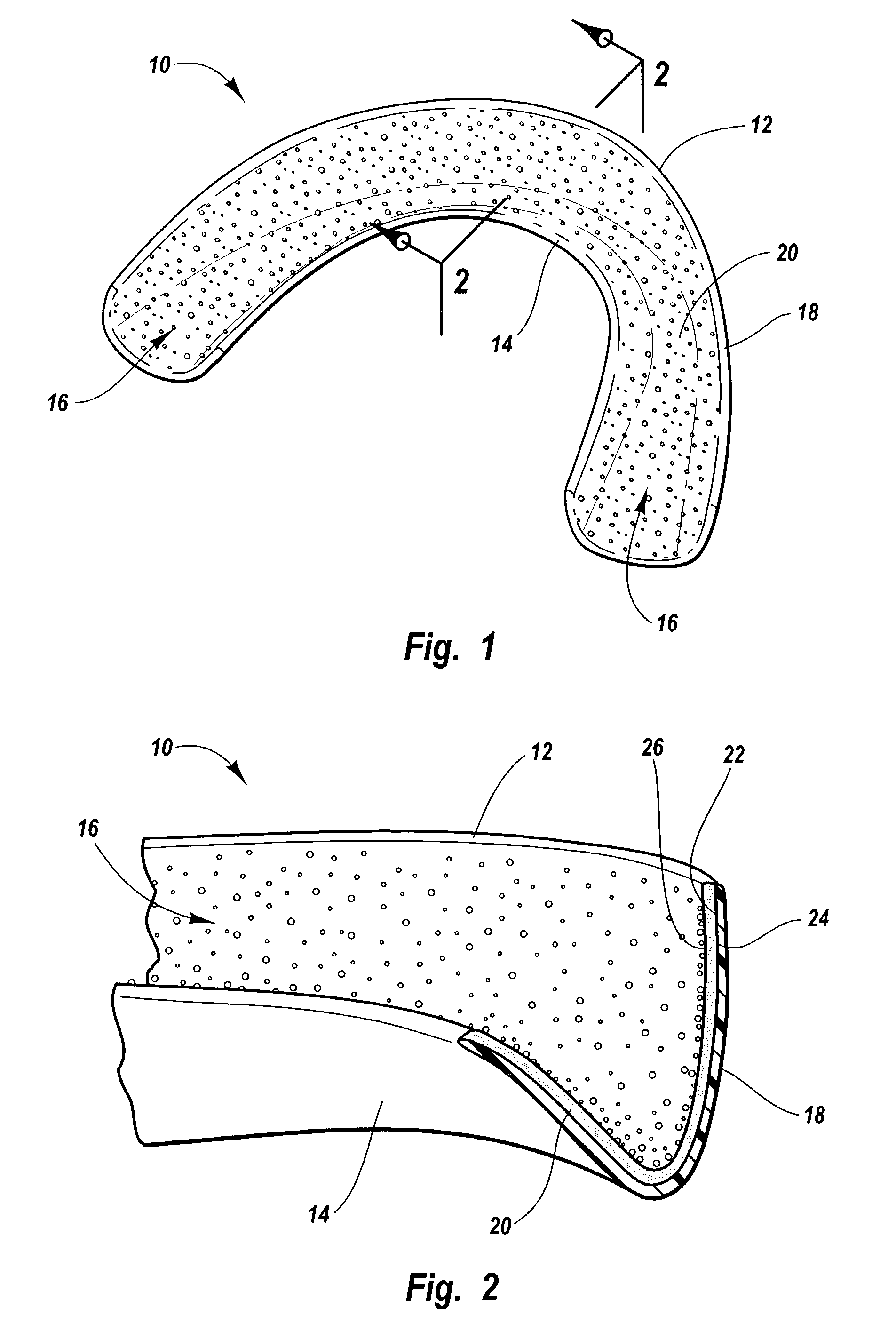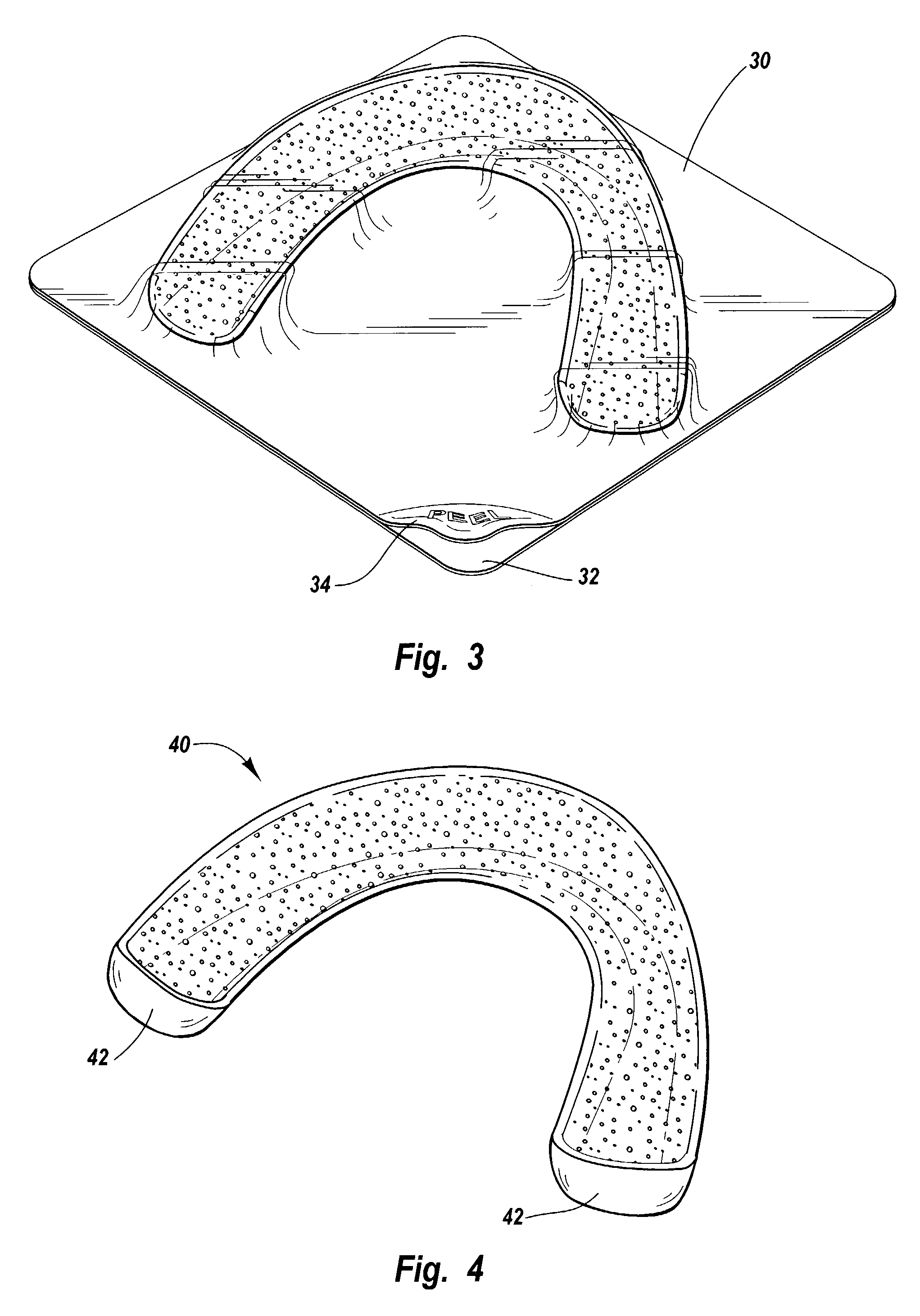Tray-like dental bleaching devices having a barrier layer and a substantially solid bleaching composition
a dental bleaching and barrier layer technology, applied in dental surgery, tooth capping, physical therapy, etc., can solve the problems of many alternatives having substantial disadvantages, time-consuming custom-made trays, and high cost of trays
- Summary
- Abstract
- Description
- Claims
- Application Information
AI Technical Summary
Benefits of technology
Problems solved by technology
Method used
Image
Examples
example 1
[0105]An initially flowable dental bleaching composition suitable for use in manufacturing a substantially solid, cohesive, and non-flowable dental bleaching composition was formed by mixing together the following components:
[0106]
Carbamide Peroxide16%Polyvinyl pyrrolidone (M.W. = 1.3 million)38%Water46%
[0107]The resulting bleaching composition was spread over the surfaces of three types of flexible polymer sheets: polyethylene sheets having a thickness of approximately 0.15 to 0.18 mm; sheets made of paraffin having a thickness of approximately 0.05 to 0.08 mm; and MYLAR sheets having a thickness of approximately 0.38 mm. The bleaching composition was spread using a spatula. The coated sheets were heated in a forced air oven heated to a temperature of 50–70° C. for approximately 1 hour. The coated sheets were removed from the oven and inspected. The bleaching composition had dried sufficiently so as to form a solid, coherent layer of bleaching layer on the surface of the polymer sh...
example 2
[0111]An initially flowable dental bleaching composition suitable for use in manufacturing a substantially solid, cohesive, and non-flowable dental bleaching composition was formed by mixing together the following components:
[0112]
Carbamide Peroxide16%PolyOx WSR 101 (M.W. = 1 million) 7%Water77%
[0113]The resulting bleaching gel was spread over the surface of MYLAR sheets using a spatula. The coated sheets were heated in a forced air oven heated to a temperature of 50–70° C. for approximately 1 hour. The coated sheets were removed from the oven and inspected. The bleaching composition had dried sufficiently so as to form a solid, coherent layer of bleaching layer on the surface of the polymer sheets. Unlike the bleaching composition of Example 1, the dried bleaching composition did not adhere strongly to the polymer sheets but was easily separated from the sheets. The coated sheets were placed back into the oven overnight.
[0114]The coated sheets were removed from the oven a second ti...
example 3
[0116]An initially flowable dental bleaching composition suitable for use in manufacturing a substantially solid, cohesive, and non-flowable dental bleaching composition was formed by mixing together the following components:
[0117]
Carbamide Peroxide16%Carbopol 974P 5%Aqueous NaOH (50%) 6%Water73%
[0118]The resulting bleaching gel was spread over the surface of MYLAR sheets using a spatula. The coated sheets were heated in a forced air oven heated to a temperature of 50–70° C. for approximately 1 hour. The coated sheets were removed from the oven and inspected. Although the bleaching composition dried sufficiently to form a solid, it shrunk considerably, probably because of the large amount of water that was needed to cause Carbopol to form a gel. Shrinkage of the bleaching composition caused the polymer sheet to become partially shriveled up. Whereas shriveling of the polymer sheet was not desired, using carboxypolymethylene as a tooth adhesion agent resulted in a dried bleaching com...
PUM
 Login to View More
Login to View More Abstract
Description
Claims
Application Information
 Login to View More
Login to View More - R&D
- Intellectual Property
- Life Sciences
- Materials
- Tech Scout
- Unparalleled Data Quality
- Higher Quality Content
- 60% Fewer Hallucinations
Browse by: Latest US Patents, China's latest patents, Technical Efficacy Thesaurus, Application Domain, Technology Topic, Popular Technical Reports.
© 2025 PatSnap. All rights reserved.Legal|Privacy policy|Modern Slavery Act Transparency Statement|Sitemap|About US| Contact US: help@patsnap.com



